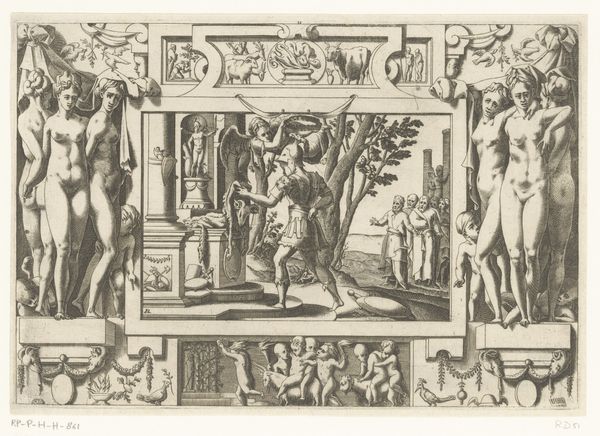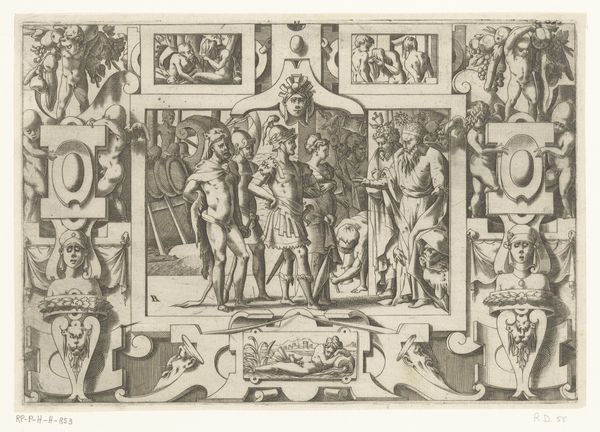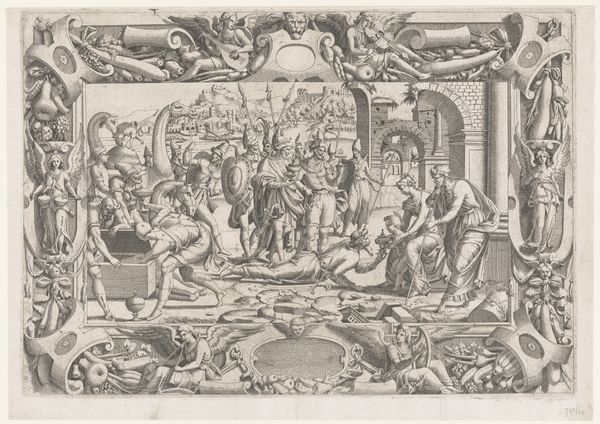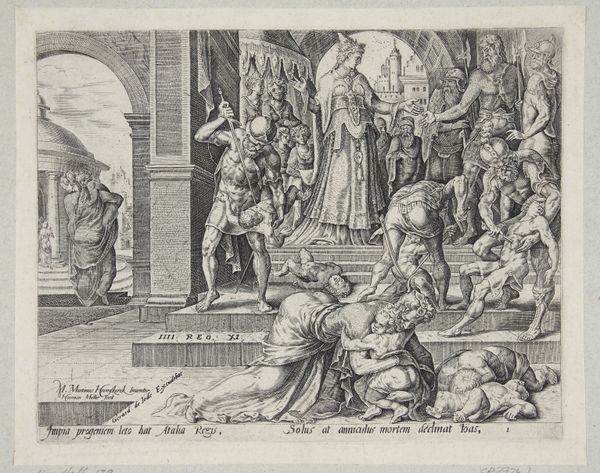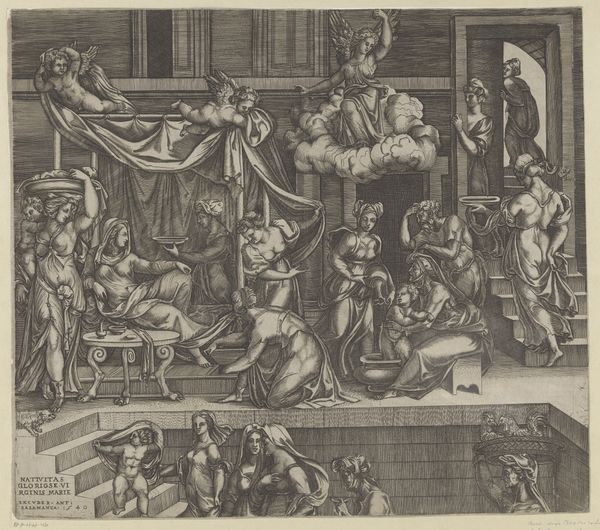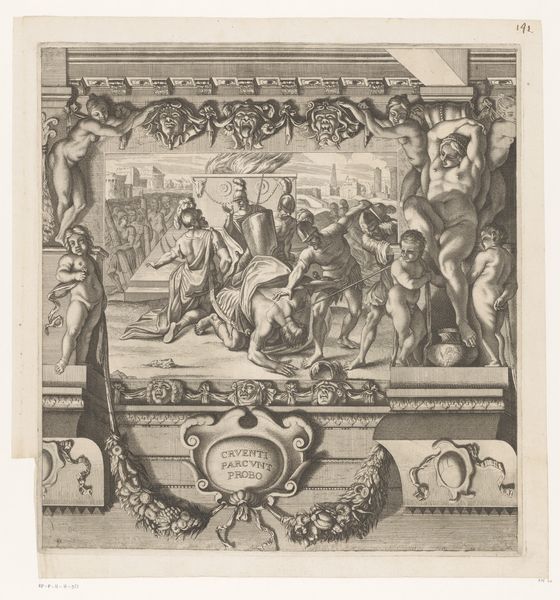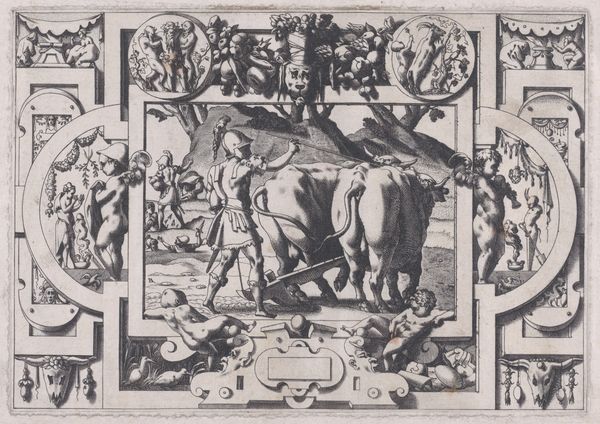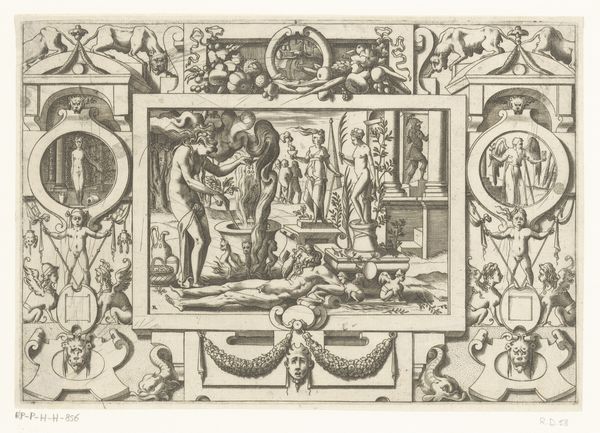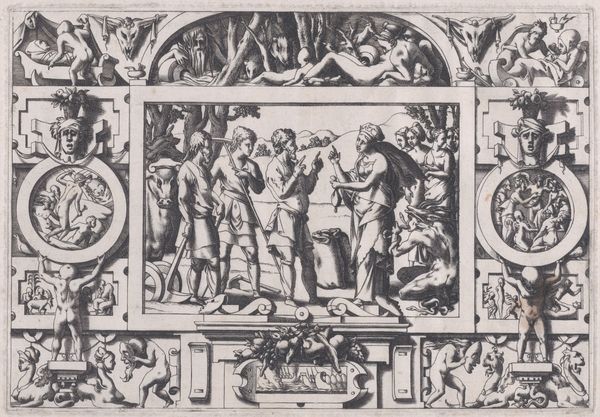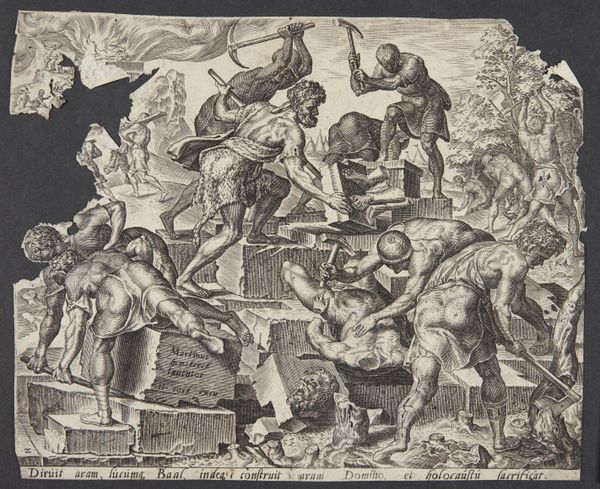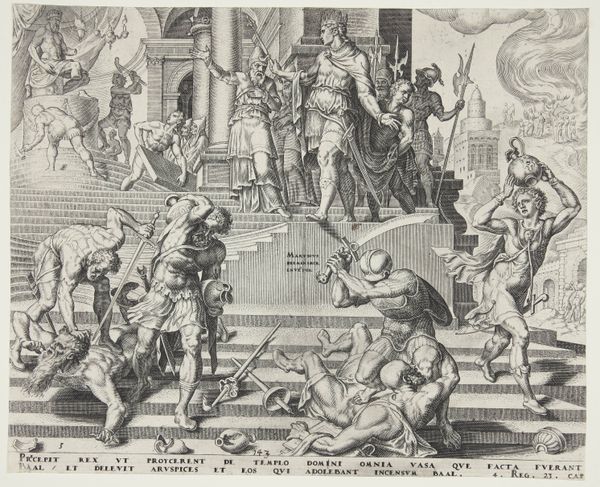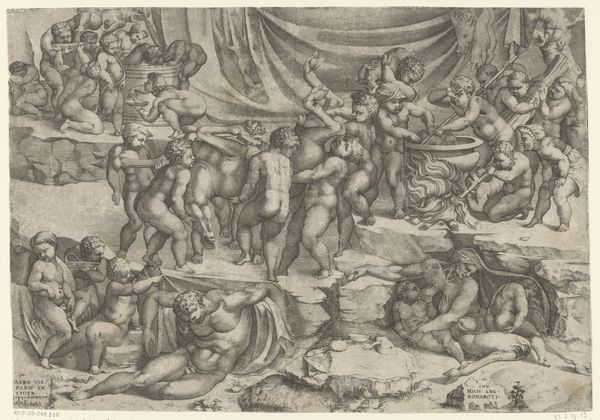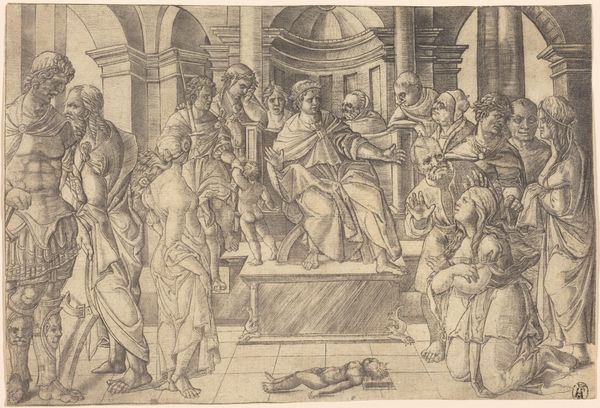
drawing, print, ink, engraving
#
drawing
#
narrative-art
#
pen drawing
# print
#
mannerism
#
figuration
#
ink line art
#
ink
#
line
#
history-painting
#
engraving
Dimensions: height 160 mm, width 235 mm
Copyright: Rijks Museum: Open Domain
René Boyvin made this print, “Phrixus wordt ontvangen door koning Aietes,” sometime between 1525 and 1598. The scene depicts a moment from classical mythology, but how does Boyvin choose to represent it? The key is in the print’s visual codes, a kind of visual language shared by artist and audience in 16th-century Europe. We see classical figures and stories framed by classically inspired architecture, complete with putti and garlands. This self-conscious embrace of the classical past suggests a forward-thinking culture, steeped in the values of humanist study and artistic revival. Boyvin’s France was changing fast. The monarchy and the aristocracy were investing heavily in Italian art and ideas, building collections and constructing palaces. Prints like this one played a crucial role in disseminating those ideas to a wider public. To understand this print fully, historians look at many sources, from account books to architectural plans, to understand the values and the aspirations of this period. It reminds us that art always exists in a specific social and institutional context.
Comments
No comments
Be the first to comment and join the conversation on the ultimate creative platform.
